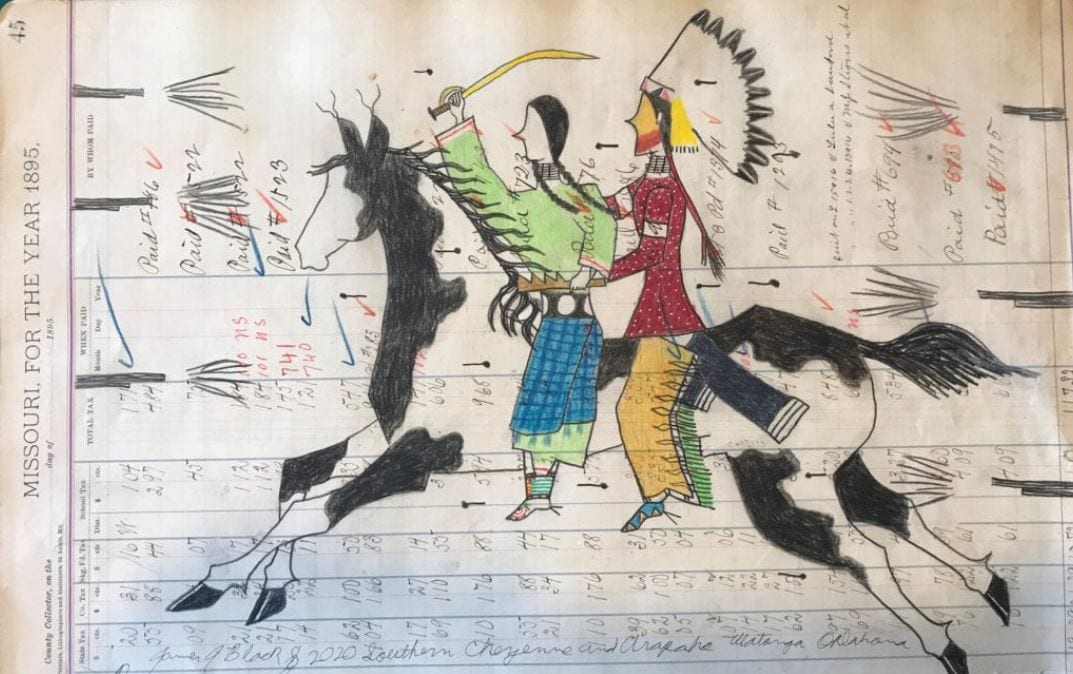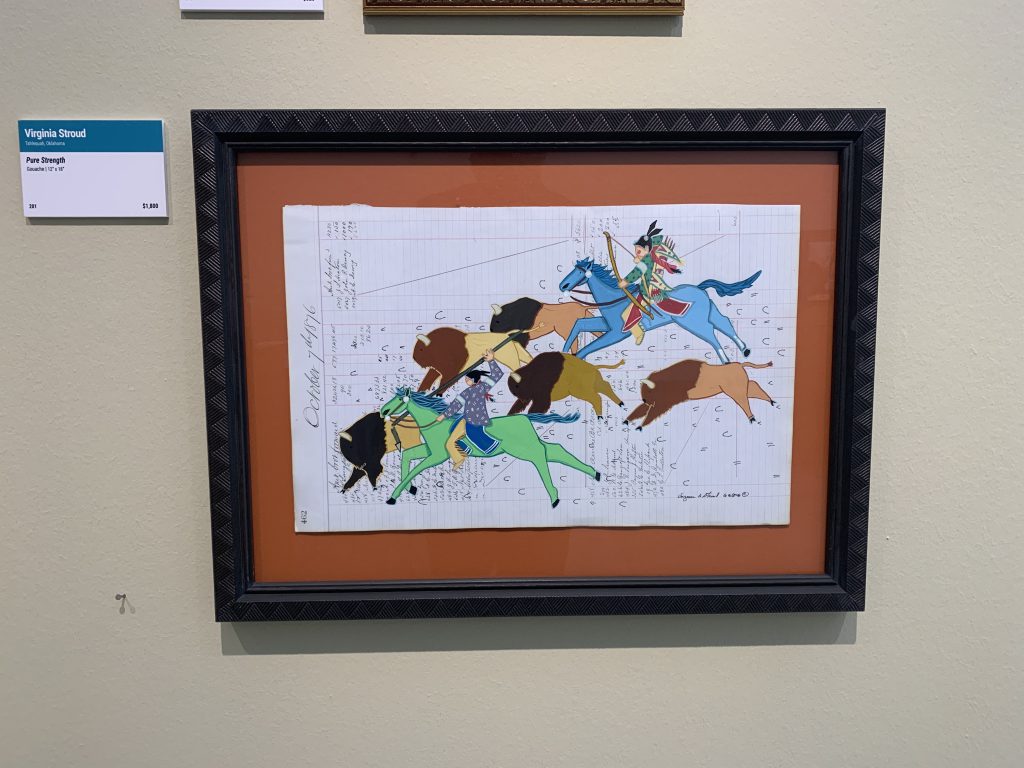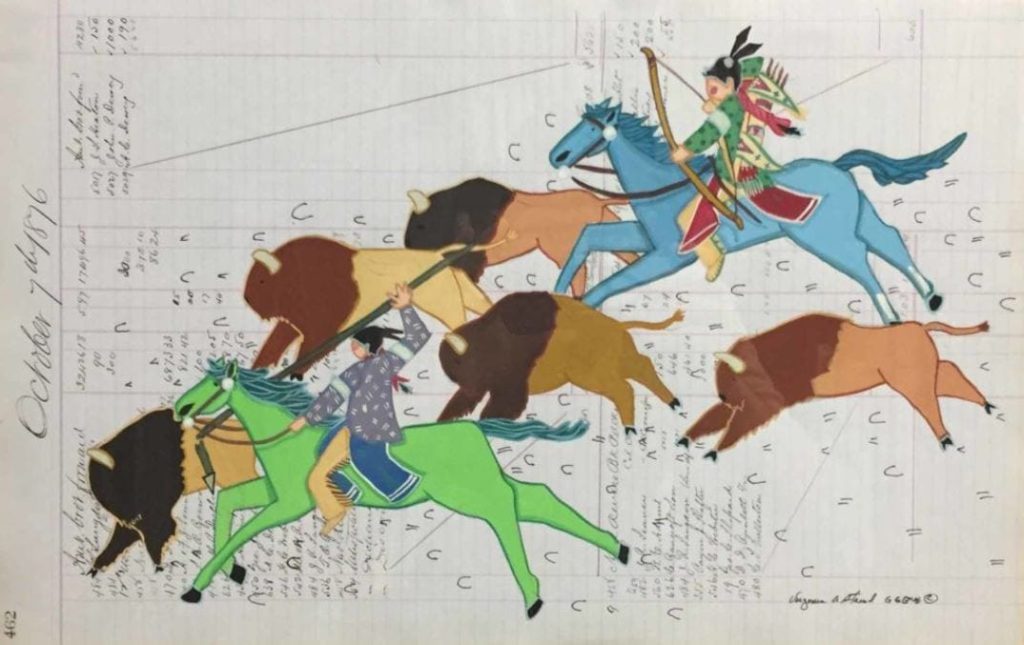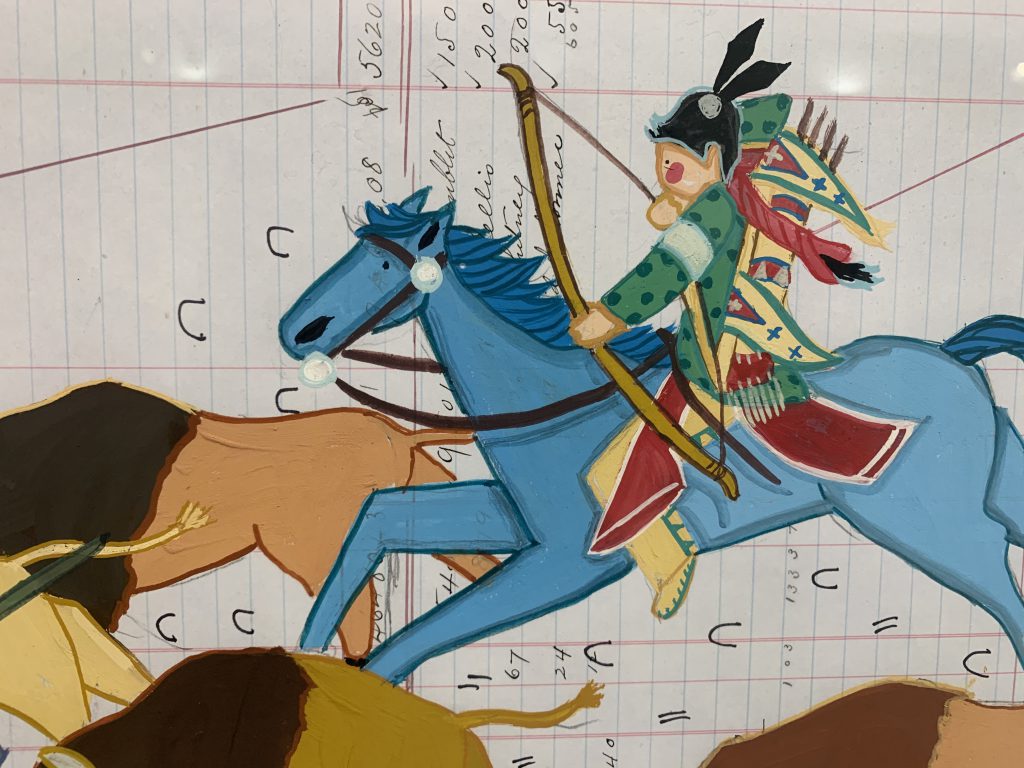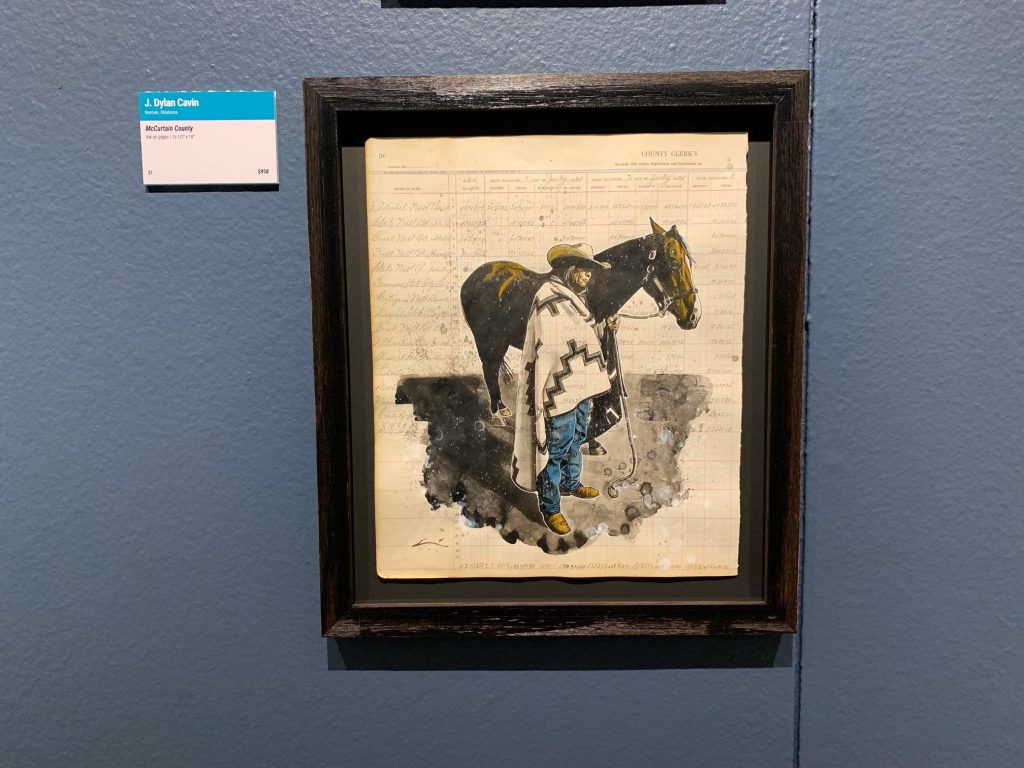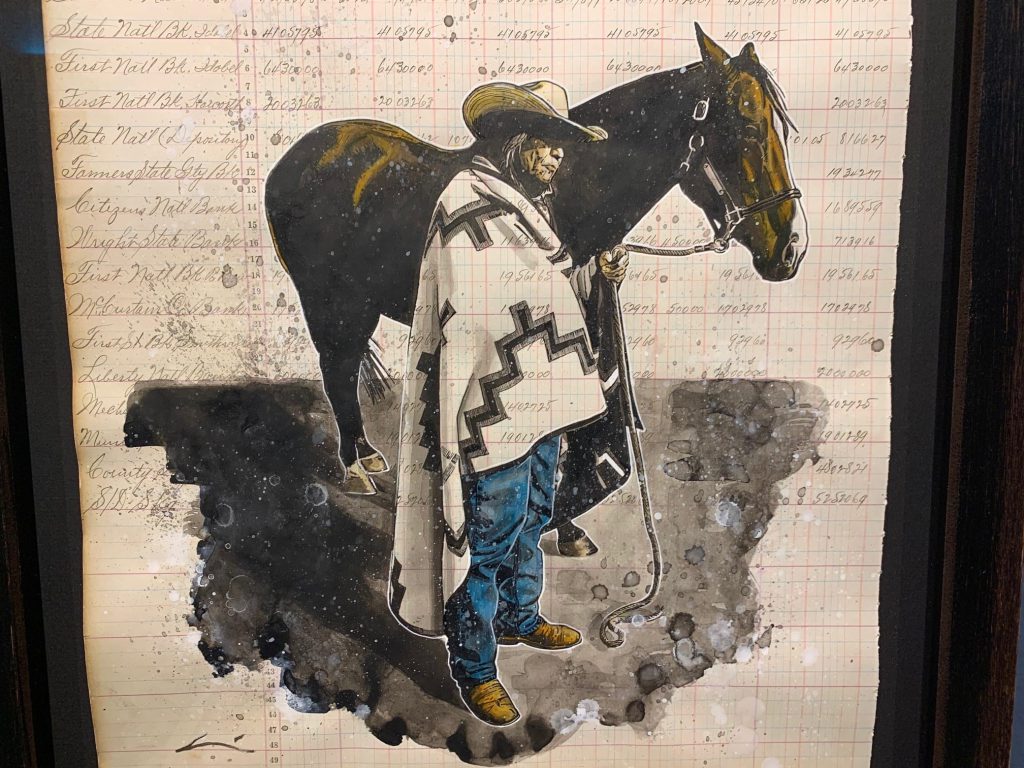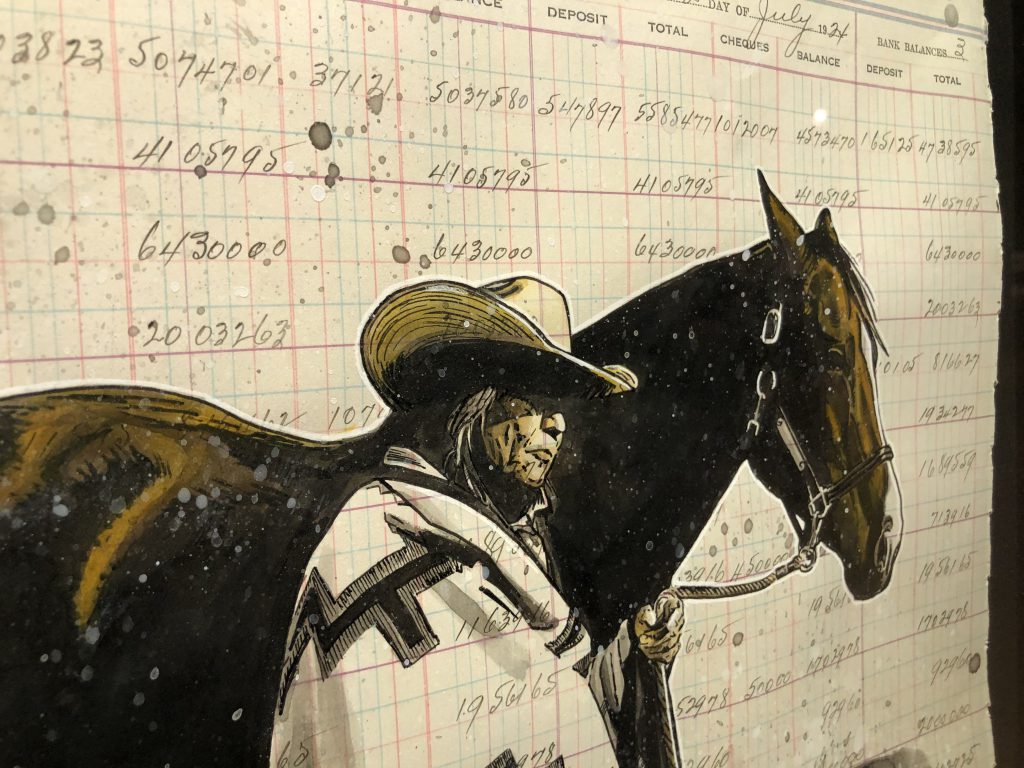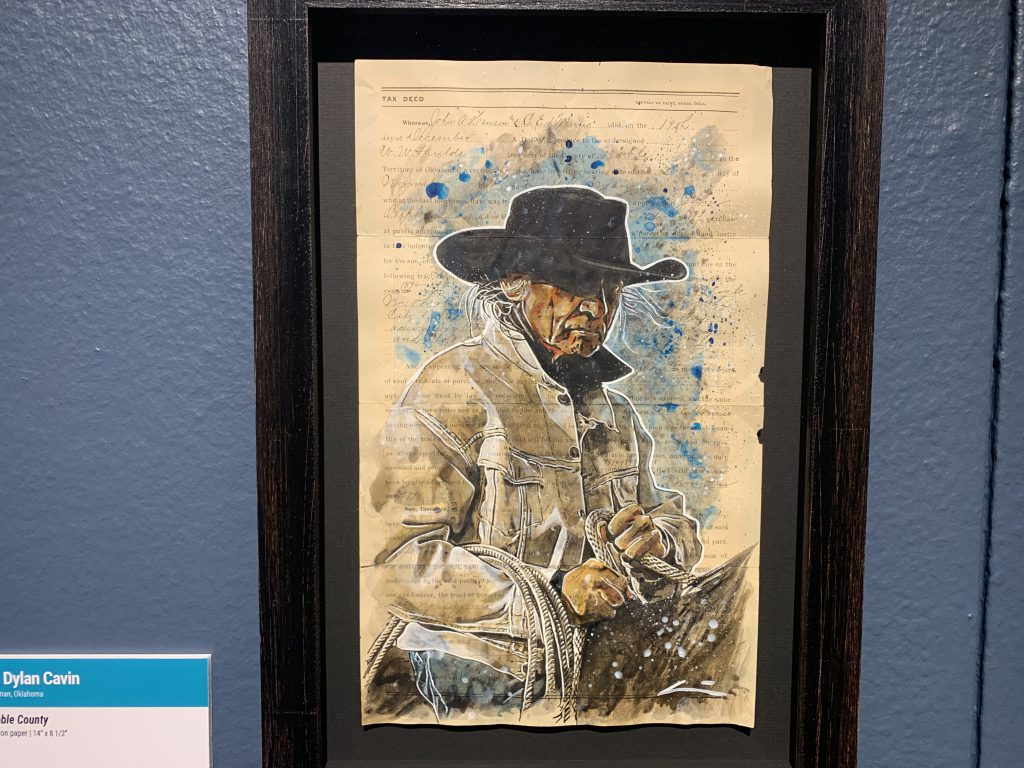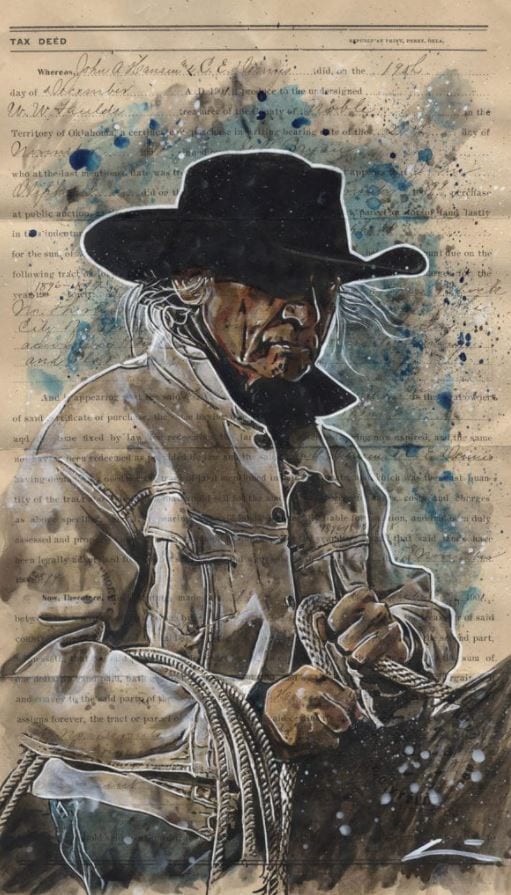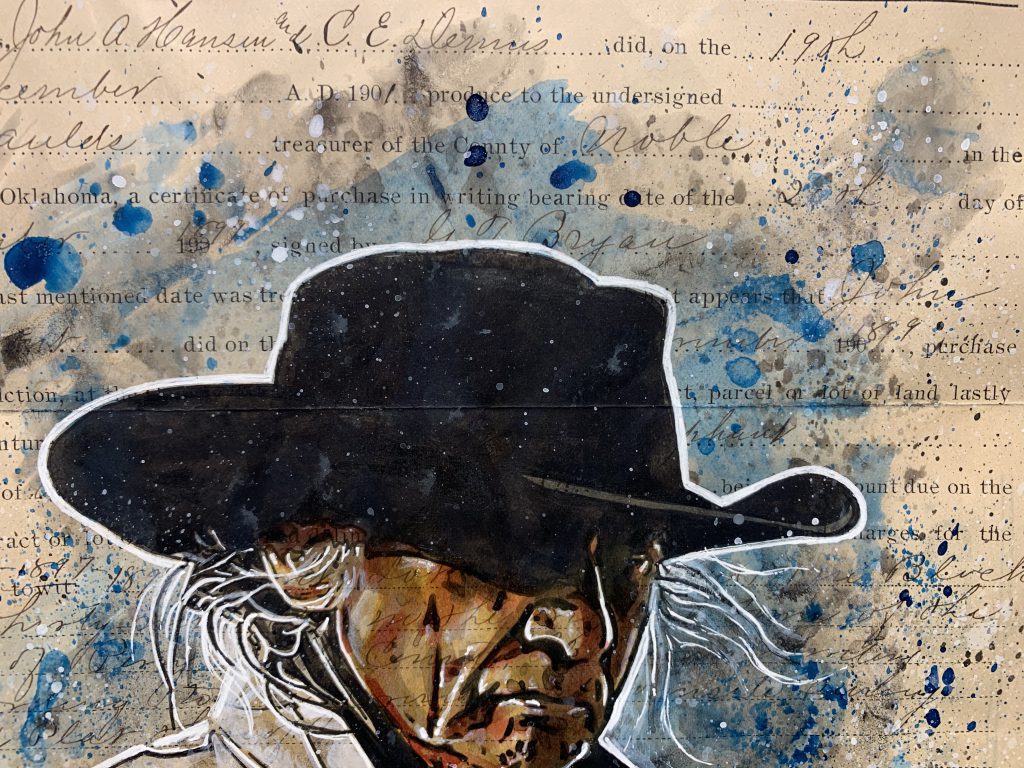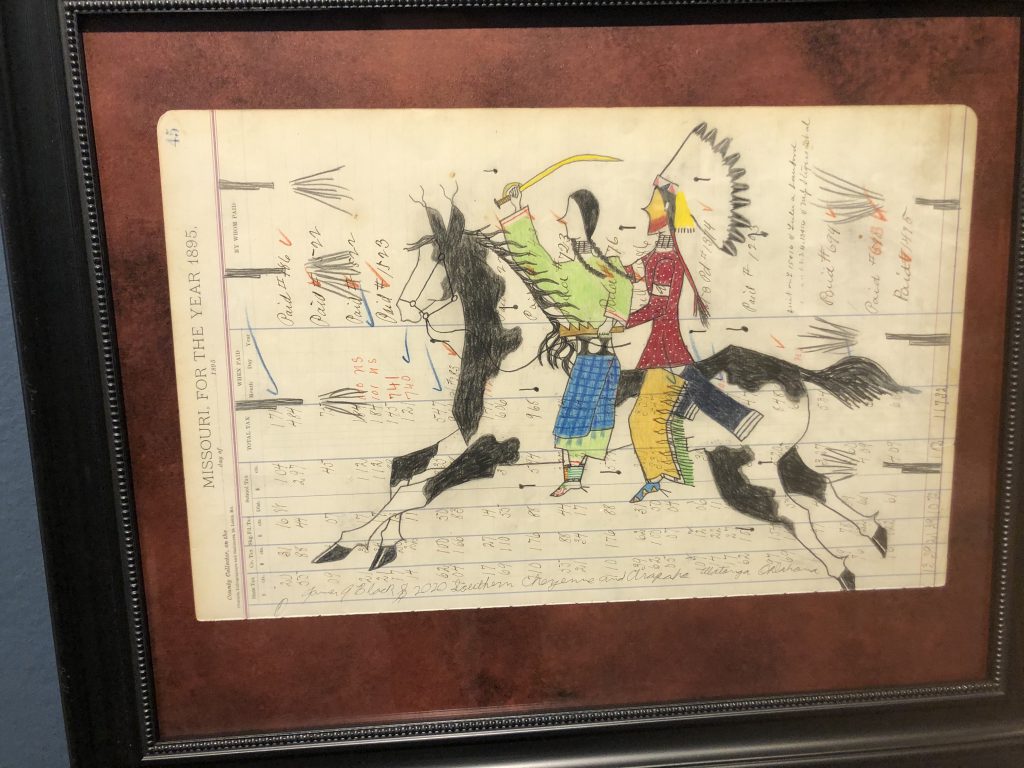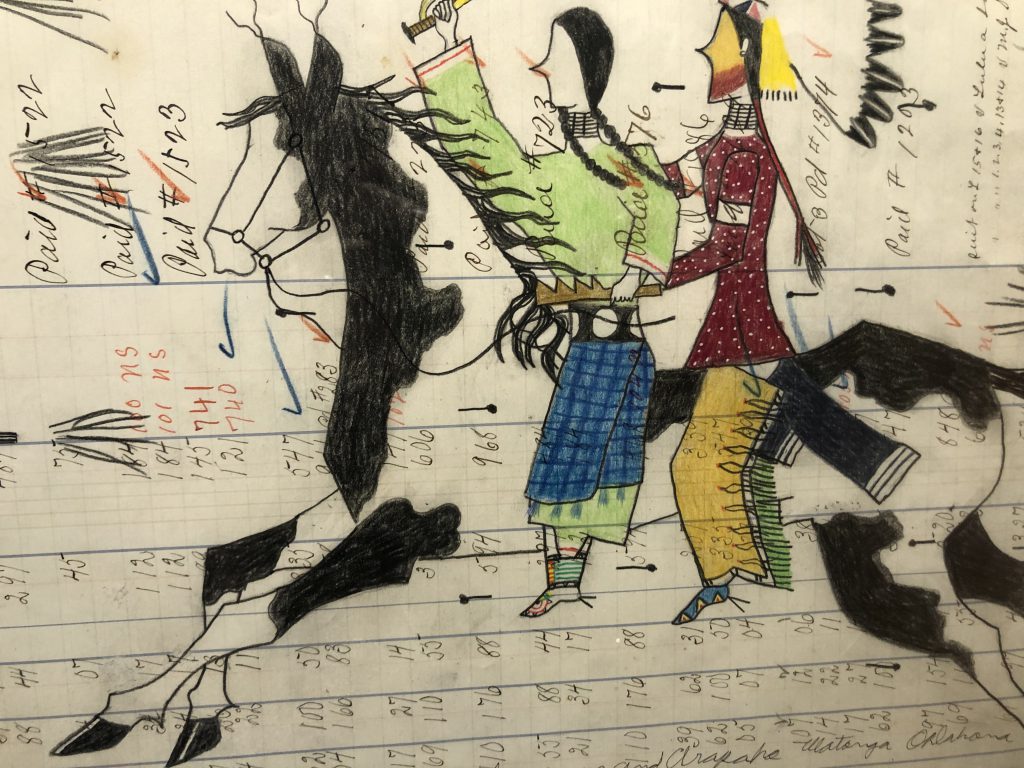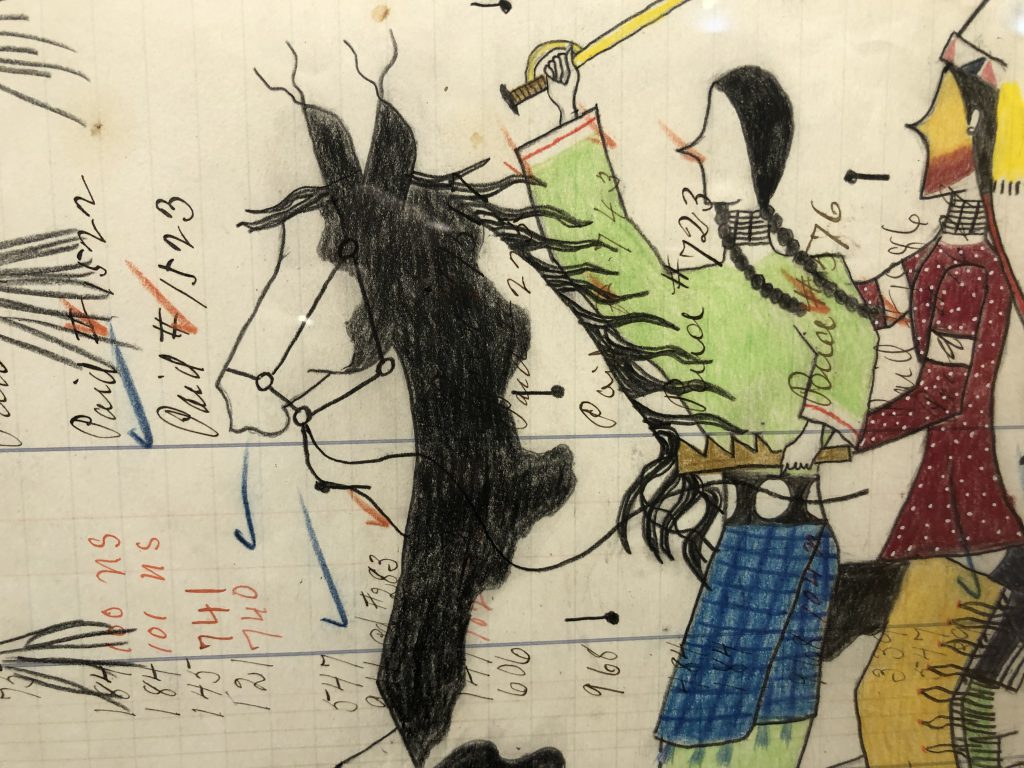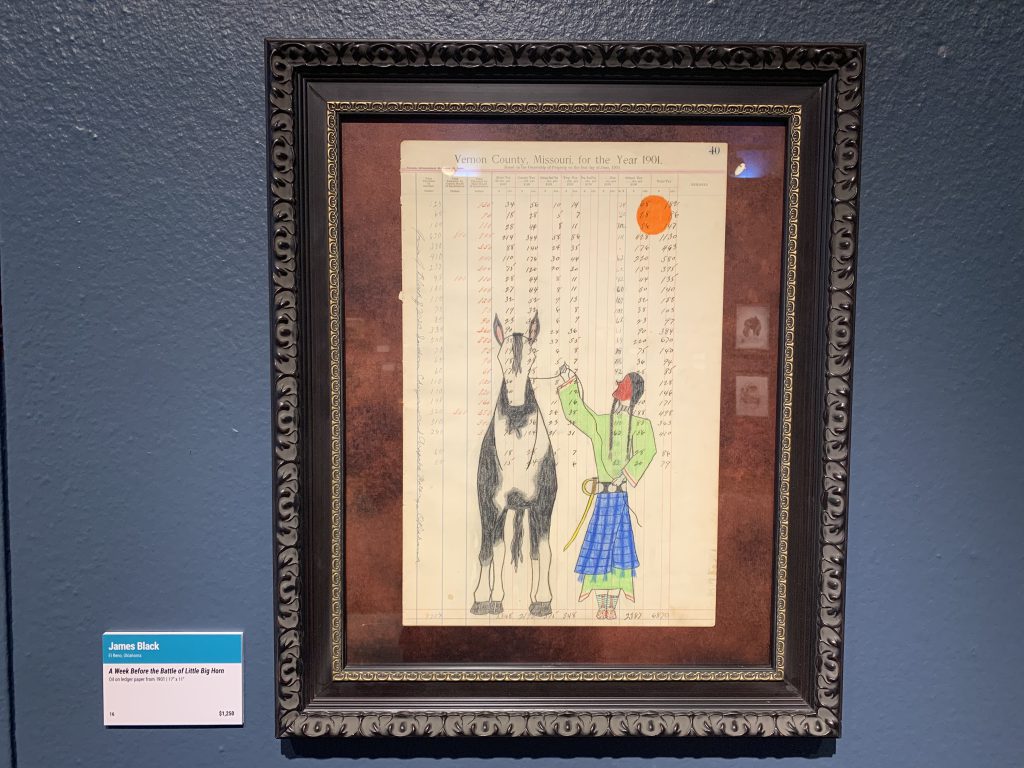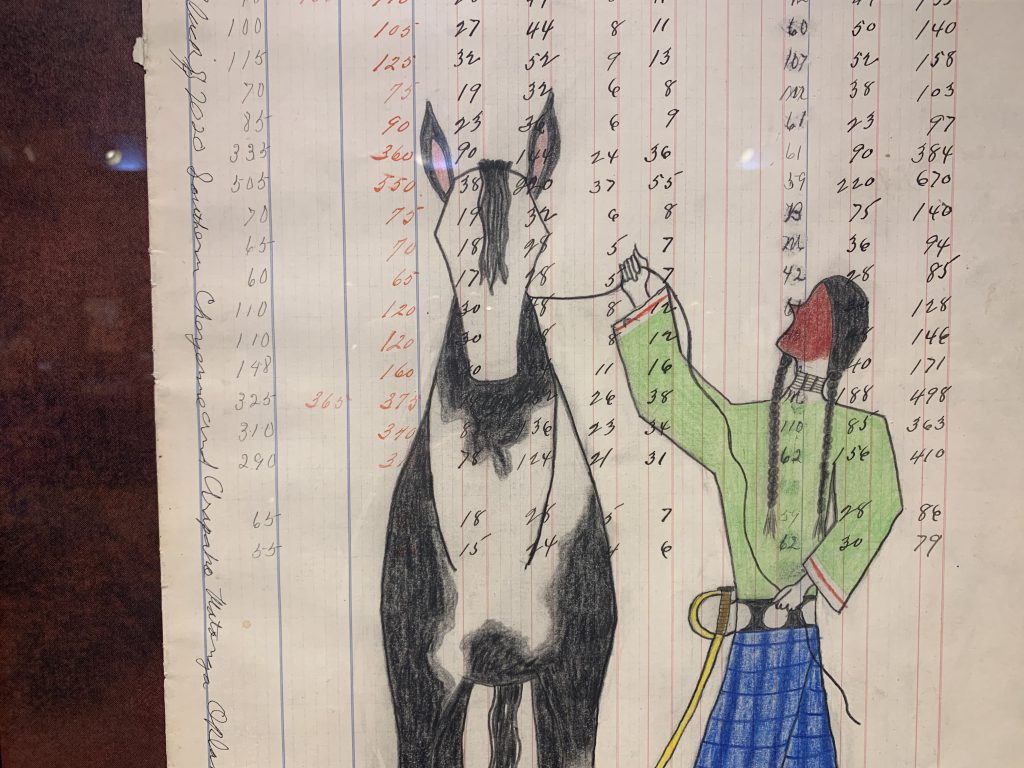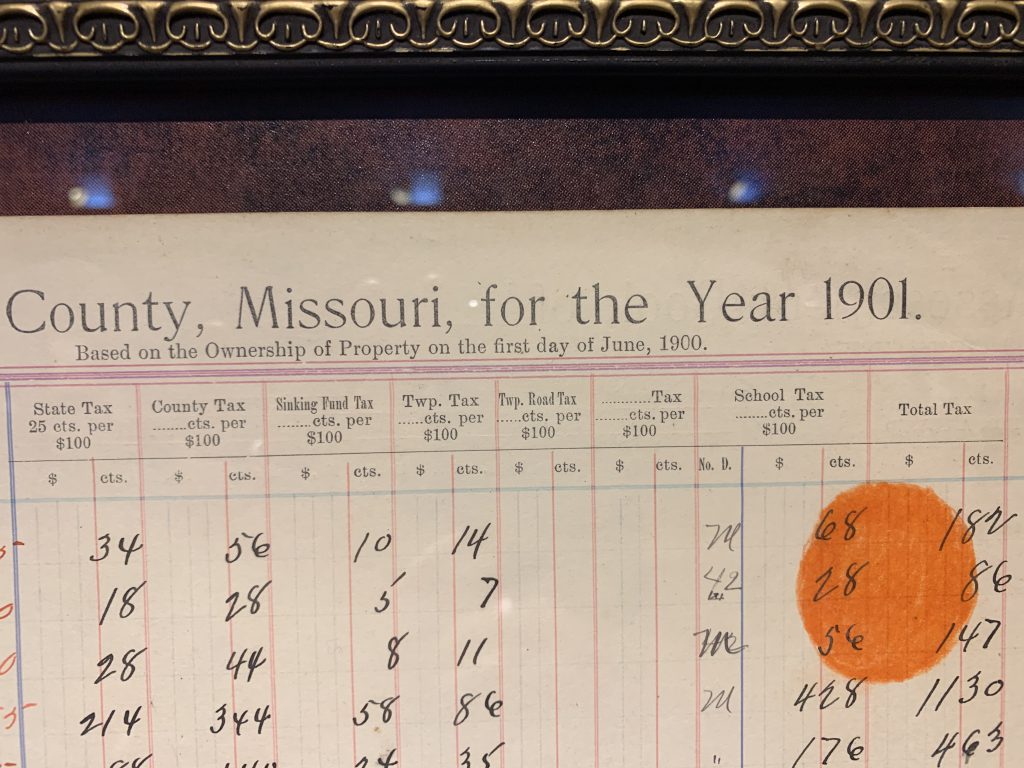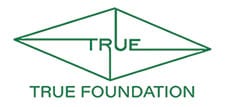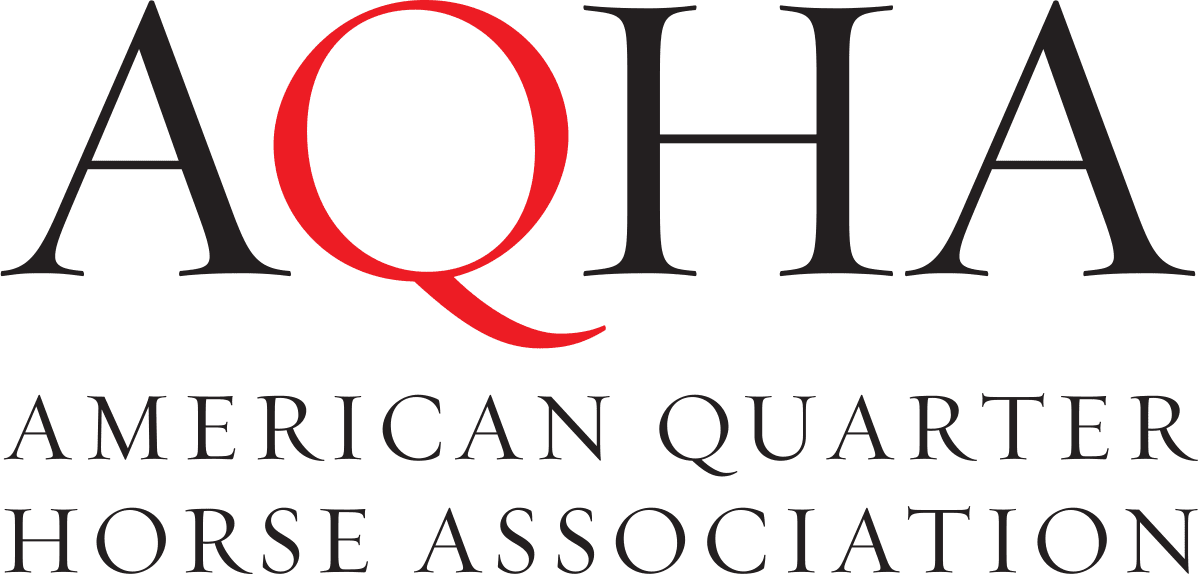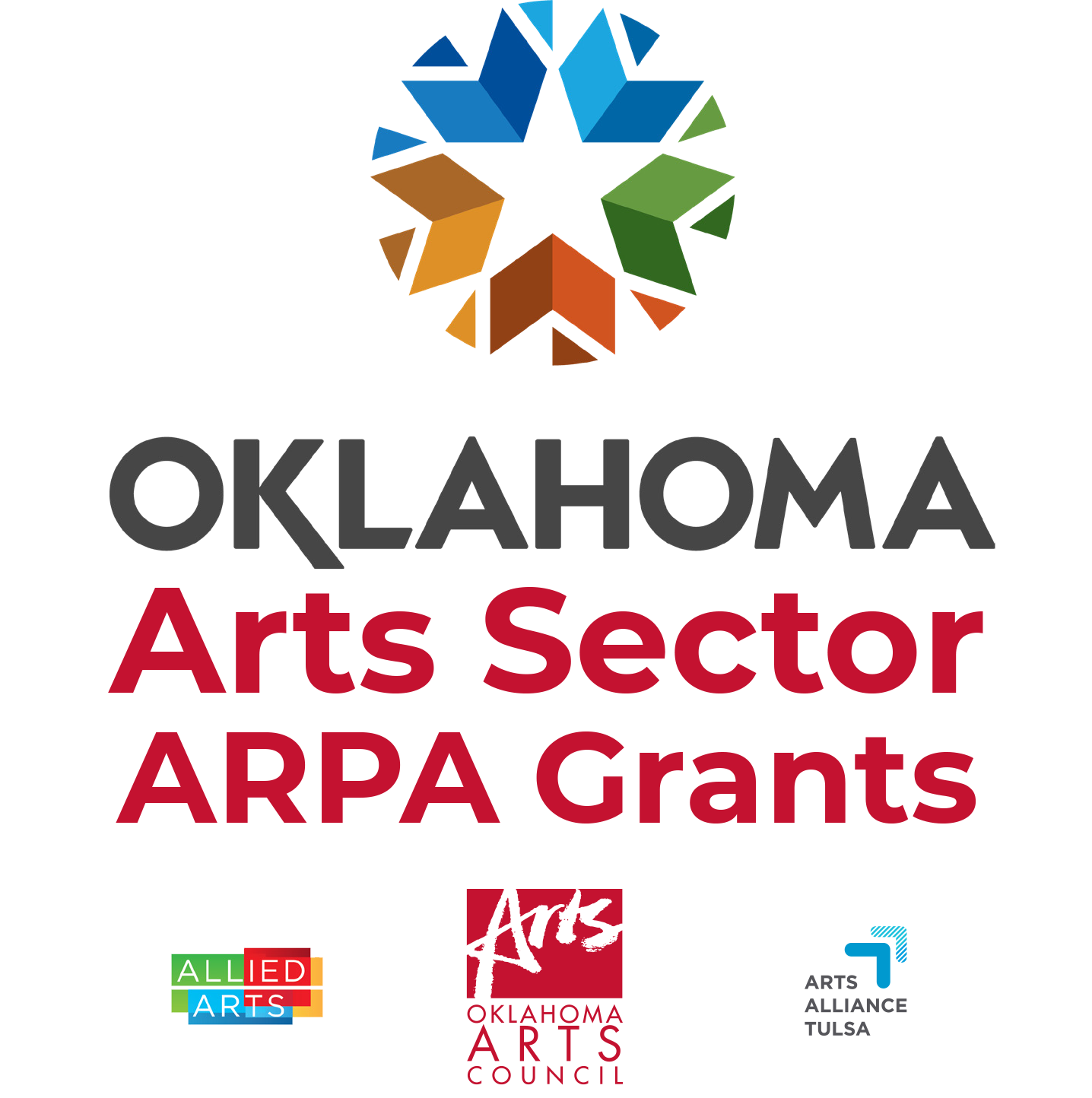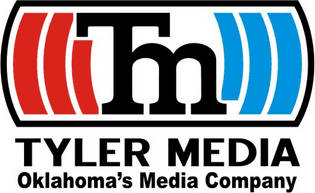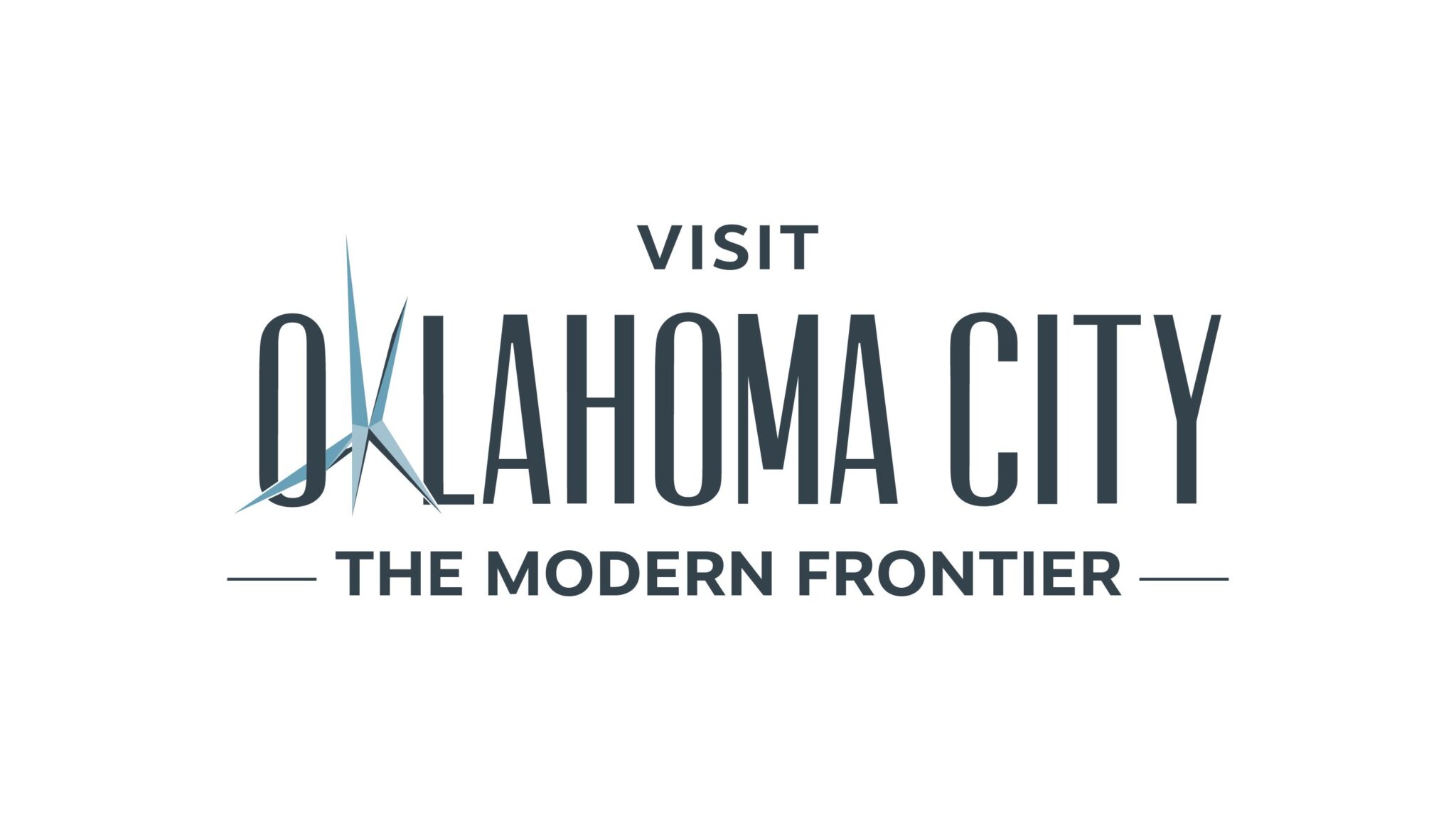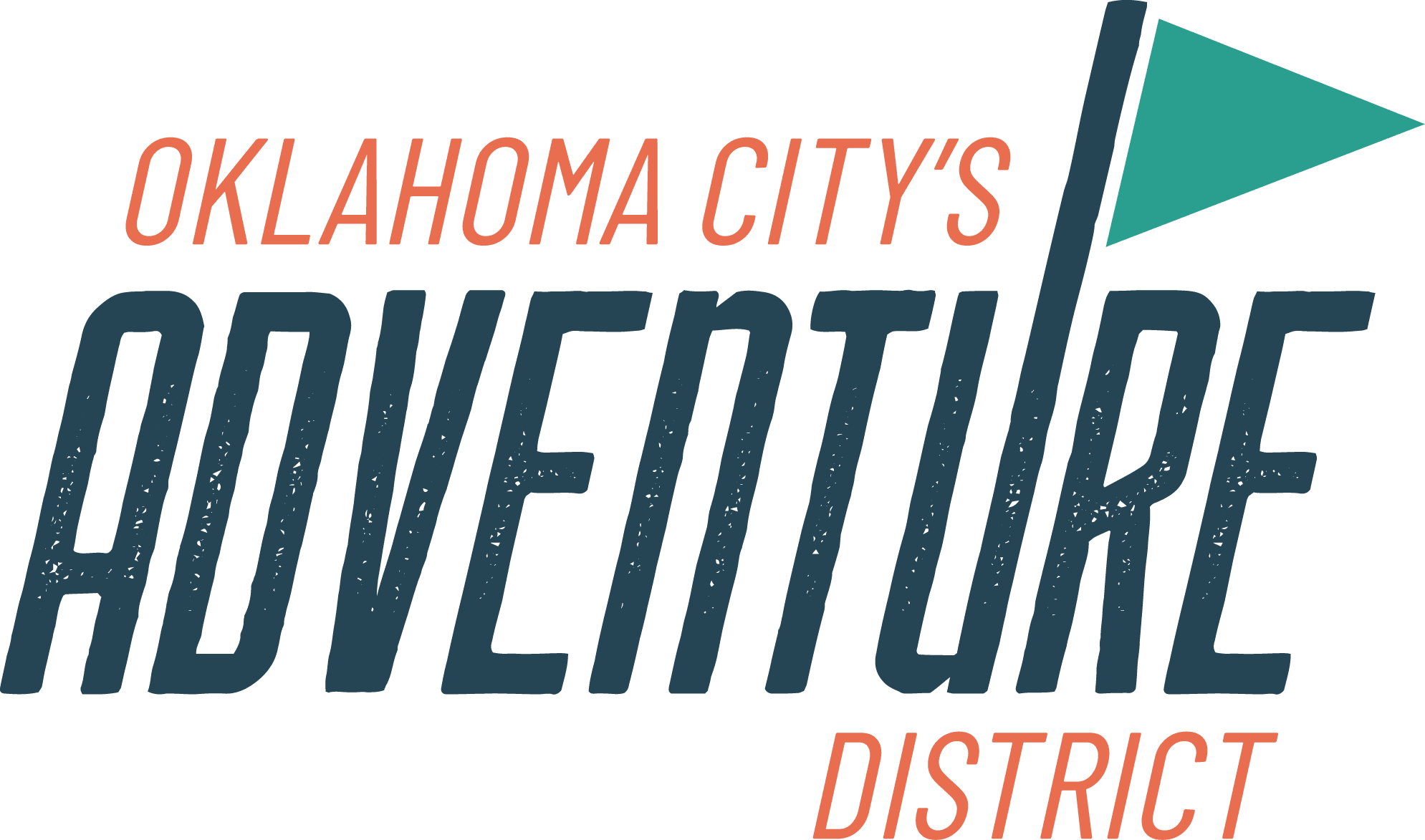Ledger art dates back to the 1830s among Indigenous Great Plains people. Ledger books from traders, the military, artists and missionaries provided a useful source of paper. These groups also brought with them pens, ink and watercolor paint.
Traditionally the men used their ledger art to commemorate their deeds of bravery and valor. Religious and cultural ceremonies were also put to paper.
The Museum has many examples of ledger drawings as a part of its Arthur & Shifra Silberman Native American Art Collection. The contemporary ledger art in Small Works, Great Wonders this year (featured below) honors this tradition and sometimes modernizes it.
“Although the use of paper was new, the idea of memorializing war narratives and tribal histories was not,” said Eric D. Singleton, PhD, Curator of Ethnology. “For thousands of years, Indigenous people used rocks, shell, stone and hide to produce similar ideas. This is a truly remarkable tradition and inspiring to see it live on in artwork today!”
Pure Strength
by Virginia Stroud (Tahlequah, OK)
Gouache, 12″ x 18″
$1,800
McCurtain County
by J. Dylan Cavin (Norman, OK)
Ink on paper, 16 1/2″ x 14″
$950
Noble County
by J. Dylan Cavin (Norman, OK)
Ink on paper, 14″ x 8 1/2″
$750
Sister Who Saved Her Brother – Battle of Rose Bud Creek
by James Black (El Reno, OK)
Oil on ledger paper from 1895, 11″ x 17″
$1,250
A Week Before the Battle of Little Big Horn
by James Black (El Reno, OK)
Oil on ledger paper from 1901, 17″ x 11″
$1,250
